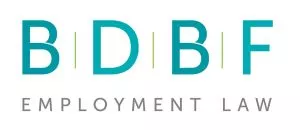The Supreme Court has ruled that a series of unlawful deductions from wages is not broken by gaps of three months or more between deductions, nor by the making of a lawful payment in between the unlawful payments. This decision makes it easier to succeed in claims where repeated deductions have been made from pay, for example, in underpaid holiday claims.
What is the background?
Entitlement to paid holiday in the UK is governed by the Working Time Regulations 1998 in England, Wales and Scotland and the Working Time Regulations (Northern Ireland) 1998 in Northern Ireland. Under both, workers are entitled to 5.6 weeks' holiday per year. Four weeks is derived from the EU Working Time Directive (Directive Leave) and 1.6 weeks is an additional domestic entitlement (UK Leave).
In terms of pay for holiday, UK law states that leave should be paid at the rate of a "week's pay" for each week of leave. For workers with normal working hours, a week's pay includes basic salary only and excludes other types of payments such as commission and overtime. However, European case law has made it clear that workers are entitled to receive their "normal pay" during any period of Directive Leave.
There have been a number of cases which have sought to determine exactly what types of payments should be included in "normal pay". In 2014, in the case of Bear Scotland Ltd v Fulton and Baxter, Hertel (UK) Ltd v Wood and others, Amec Group Limited v Law and others (Bear Scotland), the EAT held, for the first time, that payments made in respect of non-guaranteed compulsory overtime (i.e. overtime an employer is not obliged to offer, but, if offered, a worker must accept) should be included in holiday pay.
This decision exposed employers who had not included such payments in holiday pay to claims that they had made a series of unlawful deductions from wages. Where this is the case, the three-month time limit for bringing the claim runs from the last deduction in the series and the worker is able to claim for all losses in the series. When multiplied across a workforce, this left affected employers facing huge backpay bills.
However, the EAT went on to limit the impact of its decision by ruling that:
- A series of deductions must have a sufficient similarity of subject matter and there must be a sufficient frequency of repetition.
- There could not be a gap of more than three months between the unlawful deductions in order for the deductions to form part of the same "series" (the "three-month rule").
- Its decision applied to Directive Leave only and not to UK Leave, for which basic pay only could still be paid.
- Workers are deemed to take their Directive Leave before their UK Leave.
These conditions limited the risk of large backpay claims because, in practice, the series of unlawful deductions would likely be broken by the lawful payments made in respect of the UK Leave. For example, a worker takes their 20th day of Directive Leave on 4th August and takes their UK leave across September, October, November and December. The worker then takes the 1st day of Directive Leave in the next holiday year on 15th January. As there would be a gap of more than three months between 4th August and 15th January, the series of unlawful deductions would be broken.
In 2015, the Government stepped in to limit the impact of the ruling even further, by introducing regulations which prevented most claims of unlawful deductions from wages looking back further than two years from the date of the claim (although, in practice, the three-month rule had made it very difficult to establish a series of deductions going back even as far as this). However, these regulations do not apply in Northern Ireland.
What happened in this case?
Claims for underpaid holiday extending back to 1998, were brought by 3,380 police officers and 264 civilian employees employed by the Police Service of Northern Ireland (PSNI). The claims were that they had been paid basic pay for periods of holiday only, and not their "normal pay", which included overtime. The PSNI accepted the claimants had been underpaid, but disputed the period for which they were entitled to recover. The PSNI sought to rely on the three-month rule to limit the value of the claims.
In June 2019, the case went to the Northern Ireland Court of Appeal. The Court agreed with an earlier Industrial Tribunal decision and disagreed with the decision in Bear Scotland. The Court ruled:
- Whether or not there is a series of deductions is a question of fact to be decided in each case. To identify a series it is necessary to look for the "common fault" or "unifying vice" of the underpayments. Here, the unifying vice was that holiday pay had been calculated by reference to basic pay rather than normal pay. This meant the underpayments belonged to the same series.
- A series is not ended by a gap of more than three-months between the unlawful deductions, nor by making a correct and lawful payment.
- Annual leave is not taken in a particular order. Directive Leave and UK Leave form part of a "composite whole" and each day's annual leave must be treated as a fraction of that composite pot.
This decision meant it was easier for workers in Northern Ireland to establish a series of unlawful deductions from wages by virtue of underpaid holiday. When coupled with the fact that the two year look back regulations did not apply in Northern Ireland, the PSNI was left facing a backpay bill of £30 million.
However, this decision was not binding in England, Wales and Scotland, where Bear Scotland remained the leading authority. Unsurprisingly, the PSNI appealed to the UK Supreme Court. A decision of the UK Supreme Court is binding across the whole of the United Kingdom, thereby taking precedence over both Agnew and Bear Scotland.
What was decided?
The Supreme Court agreed with the Northern Ireland Court of Appeal and ruled that:
- What constitutes a "series" is a question of fact that must be answered in light of all relevant circumstances including, but not limited to, their similarities and differences, their frequency, size and impact, how they came to made and what links them together. In this case, the Northern Ireland Court of Appeal had been right to find that each unlawful underpayment was linked by the same "common fault" (i.e. that holiday pay had been calculated by reference to basic pay only) and belonged to the same series.
- A series is not necessarily ended by a gap of more than three-months between the unlawful deductions or by the making of a lawful payment. Unlawful deductions do not have to be next to each other in order to establish a series.
- There is no legal requirement that Directive Leave and UK Leave must be taken in a particular order. Instead, both forms of leave (together with any additional contractual holiday the worker may be entitled to) form part of a composite whole.
What does this mean for employers?
This decision means it will be easier for UK workers to bring deduction from wages claims in respect of underpaid holiday pay. It will be possible to establish a series even where unlawful payments are interspersed with lawful payments and even where there are gaps of more than three months between the deductions.
Employers who have not adjusted holiday pay to include components of pay representing a worker's normal pay should ensure that holiday pay is now regularised. Exposure to claims for the historic underpayments will remain, but workers will still only have three months from the date of the last deduction to bring the claim (subject to any extension of time given by virtue of Acas Early Conciliation and/or ordered by an Employment Tribunal). Where claims are brought in time, they will remain limited to the two-year look back period in England, Wales and Scotland.
Employers should remember that this ruling does not apply to deductions caused by underpaid holiday only. It applies to any deductions from wages claim where the series of deductions relates to any form of wages as defined by the ERA 1996 including a fee, bonus, commission or other employment-related emolument.
Finally, the ruling that all types of annual leave entitlement form part of a "composite whole", leaves employers with a practical headache. By way of example, a full-time worker working for Company X is entitled to 33 days' annual leave made up as follows:
- 20 days' Directive Leave paid at his normal rate of pay (i.e. basic pay plus overtime);
- 8 days' UK Leave paid at his basic rate of pay; and
- 5 days' of contractual leave paid at his basic rate pay.
In other words, around 60% of his leave is paid at the normal rate of pay and around 40% of his leave is paid at the basic rate of pay. Strictly speaking, when he takes one day's leave, the pay for that one day should be calculated according to that ratio. And where employers have workers with differing holiday entitlements, the calculations would need to be adjusted on a case-by-case basis.
Chief Constable of the Police Service of Northern Ireland v Agnew and others
The content of this article is intended to provide a general guide to the subject matter. Specialist advice should be sought about your specific circumstances.

